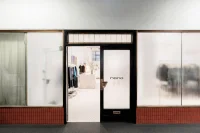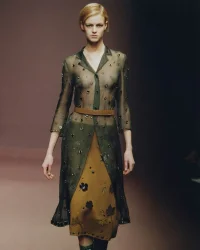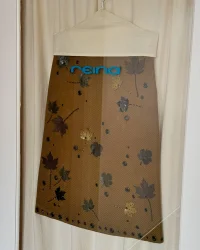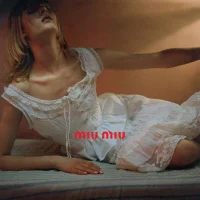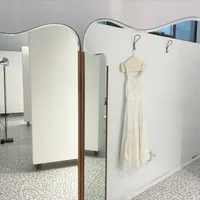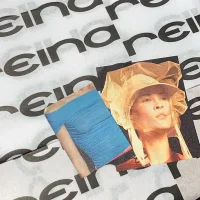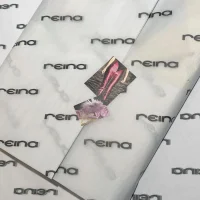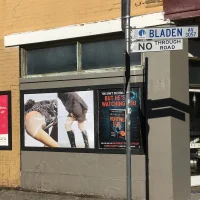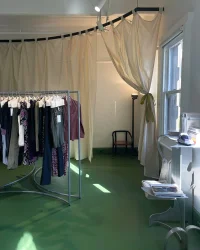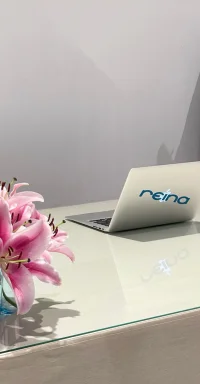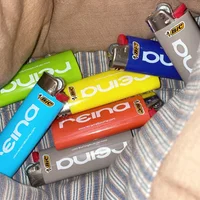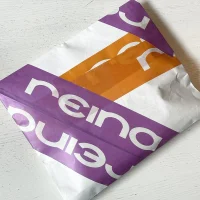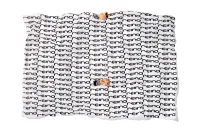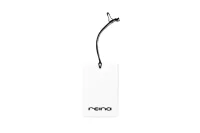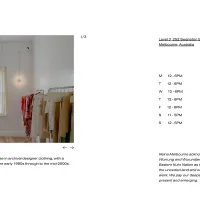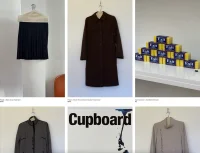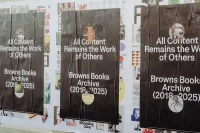REI
21
Retailer of archival European garments from 2000-2009
Brand Positioning
Brand Identity
Logotype
Packaging
Website
Collateral
REBUKE OF THE DEFAULT
In an era where much of fashion has resolved itself into a narrow bandwidth—sans serif, curated money minimalism—there is a pull towards something more impulsive and personal. Just as grunge infiltrated fashion of the late 80’s, defying an era dominated by luxe conservative aesthetics, there is a renewed desire for anti-algorithmic narratives. A rebuke of the default. Think Vivienne Westwood’s anarchic glamour, Kristen McMenamy and Stella Tennant’s androgyny, the emergence of the Antwerp Six.
Fashion has always devoured and replicated itself, all while commenting on its own cannibalism. This dialogue between the self-aware and the there-and-gone speaks to fashion as a creature of the zeitgeist. The ultimate shapeshifter and time traveller, fashion spans multiple contexts. It is both idea and entity. A portal into the past and a projection towards the future. Similarly, Reina exists somewhere between Milanese showroom and mid-90s teenage bedroom. A retailer playing with culture and presenting fashion as a continuum. It catalogues a liminal moment when fashion and founder believed in the future, even as it wore its hangups on its sleeve. Rather than falling backwards into nostalgia, its vision dilates with the vitality of renewed atmosphere. Curating sensation, memory and mood as an antidote to the contemporary apathy of the doomscrolling decade.

ACTIVE ARCHIVE
Fashion isn’t static. It’s inherently interested in movement and presentation, physically and ideologically. Despite our increasingly virtual reality, the catwalk still dominates the fashion landscape as a site of tangible expression and myth-making, where clothing is worn and fantasies realised. From Shalom Harlow at Alexander McQueen to Kate Moss at Dior by John Galliano, fashion’s original ‘viral’ moments are still discussed, replayed and shared with awe. Captivating new audiences longing for theatre and artistry. The rise of archival fashion on red carpets speaks to this enduring power, evidenced by Zendaya in Thierry Mugler’s A/W 1995 robotic bodysuit at the 2025 premiere of Dune Part 2. Stylists leverage the exclusivity of these pieces whilst connecting their clients with the magic of the original moment. Likewise, Reina founder Romy Theodore transformed a rolling montage of iconic fashion editorials from her youth into a tangible, authentic and wearable archive. The daughter of Scanlan Theodore founder Gary Theodore and renowned milliner Tamasine Dale, fashion has always been part of her DNA. Reina, however, extends fashion beyond legacy. Garments aren’t merely archived, they’re activated in the here and now. This is vintage, but not vintage as category. A contemporary statement and solution. It is an alternate to the pitfalls of mass consumerism, the environmental impact of fast fashion and the economic graft of keeping up appearances. It is fashion in conversation with its moment—garments from 1990 to 2000 that speak with the voice of their time and still have something to say.
DIGITAL JUVENILIA
The resurgence of 90’s / 00’s aesthetics comes from a collective craving for optimism. The feeling of being plugged into something that feels vital and emergent. Self-conscious apathy gives way to playful curiosity. Reina’s identity responds to this spirit and the sensibility of digital culture. Exaggerated display typefaces meet maximalist layering—a beautiful clutter. Like a personal site circa 2002. Digital juvenilia without the retroactive cringe. The spontaneous youthful energy of the early internet era. Where growing up happened in the digital public square. Pre social media, pre autocratic algorithm, just the immediate personal expression of a generation, writ large and broadcast globally. There’s a collaborative transparency to it, either naïvely or knowingly. A willingness to show the interface, reveal the source and play with the polish. Like a security cam feed styled for a fashion shoot, or an online diary that just happens to sell Margiela. More DIY than AI. The bright, bold aesthetics of Ettore Sottsass’ Memphis Group contrasted with the contrived cool of a hypebeast.
Awkward silhouettes and graphics feel sharp again. It is Y2K glamour with an arched brow. European excess wrapped in the thrill of new technology, projecting new realities yet to materialize. It is a celebration of the timeless appeal of fashion, its postmodern possibilities and speculative spirit. There’s no single mood-board, just a glimmer of something familiar, re-contextualised and reframed, made uncanny through times blur. Like the enduring beauty of a Jil Sander campaign lensed by Craig McDean, or the eternal exuberance of a Ryan McGinley photograph, blushing and blurring with the fierce aliveness of youth. Fashion captures ideas and feelings in the moment, but always ahead of their time.


BOTTLED ZEITGEIST
Importantly, it’s not chaos for its own sake. There’s a quiet knowing beneath the glitter and glitch. The awkwardness is elegant and the DIY becomes intentional. The result is a sense of being completely in-the-moment—even if that moment happens to be 25 years ago. The past isn’t flattened into kitsch, nor glorified as artefact, it’s lived with, kept intact and is styled again and again, becoming worn self-expression and not just visual reference. These clothes still speak to us, and the way we wear them ‘now’ changes the way we understand them ‘then’. Fashion becomes a loop. A remix. A method of time travel. The site itself acts like a capture: ephemeral but specific, contained. It lets you peek behind the interface, reminds you it’s a surface not a showroom. Like the best of fashion, it’s both a mirror and a screen.
Pieces from Prada Sport or early Helmut Lang exude charismatic energy; the kind of anonymous techno-adjacent streetwear that once ruled a club’s smoking section. A dress might feel like a still from a film you half-remember, the digital imprint of a silhouette you see even when you close your eyes. A jacket might recall a site you used to visit on dial-up. They all belong to a moment before nostalgia took hold and just outside of the canon it later created. Yet they are still as tangible, charged with the magic and meaning of another time, just waiting to be folded into the present.
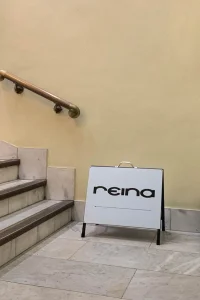
OFFBEAT MILANESE CHIC
There’s a very specific elegance at work. A kind of offbeat Milanese chic—playful, precise, a little ‘wrong’ in just the right way. Reina celebrates that tension, bottling the zeitgeist without sterilising it. Romanticism is paired with digital awkwardness and excess is offset by irony. The hangover of ‘90s techno optimism collides with the DIY energy of early web aesthetics. It’s refined chaos. Garments are styled with a charming irreverence—no nods to minimalism, no allegiance to quiet luxury. Instead, a joyful confrontation of colour, shape, and surface that is an endorsement of assemblage and instinctual presentation. Dressing up to stand out, rather than fit in.
This is what Reina trades in—not just vintage, but attitude. Not just garments, but the sensibility of an era that existed on the cusp of everything. A time before algorithms, before detached uniformity, before the archive was commodified. When fashion moved faster, weirder, riskier. When it wasn’t so sure of itself, and maybe because of that, felt more alive, vulnerable and tangible. This is fashion to be inhabited. These are clothes to be styled instinctively, worn with urgency, treated not as relics but as live matter. Reina isn’t about looking back. It’s about being back, for just a second, and then stepping forward again slightly changed.
Photography: Daniel Herrmann-Zoll, Romy Theodore.
